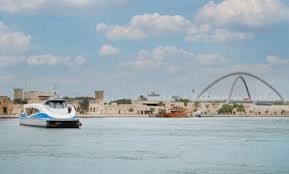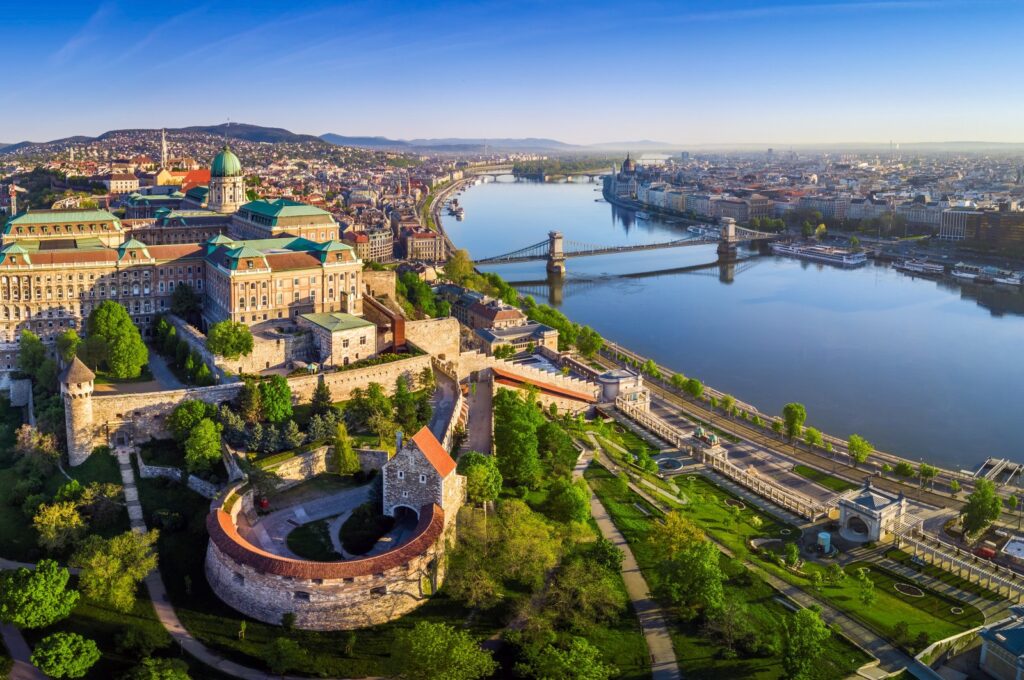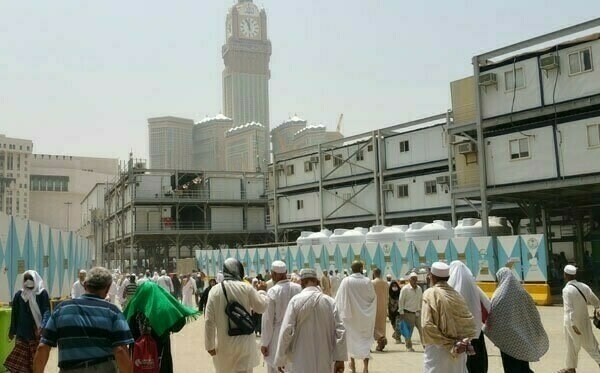
Luka Jukic
Few countries emerged from World War Two as devastated as Poland. The country lost about a fifth of its population and its capital Warsaw was almost completely razed by the Nazis, with much of its cultural heritage plundered or destroyed. Even the nation’s border was moved several hundred kilometres west, forcing millions to relocate to the so-called “recovered territories” once part of Germany, also largely left in ruins.
Yet out of that rubble, hope for a new world emerged. One free from the baggage of the past, which would restore the pride of a broken nation and solve the social ills that had long plagued it. Or so promised the Polish communists that took power in 1948, and, under Joseph Stalin’s watchful eye, set about rebuilding the country, armed with the ideological conviction that a new society must emerge from the old.
Emblematic of this new society was a Socialist Realist city called Nowa Huta, founded in 1949 just east of Krakow and constructed over the subsequent decades. At its heart was the gargantuan Vladimir Lenin Steelworks, intended to produce more steel than the entire country was able to manufacture before the war. Nowa Huta, which literally means “New Steelworks” in Polish and was built to accommodate the steel workers, was the most ambitious project of urban planning in post-war Poland: a utopian socialist city that the rest of the nation could model itself after. Five large boulevards fanned out from the Central Square, giving Nowa Huta a distinctive pentagonal shape and emphasising its monumental character.
But Stalin’s death in 1953 and subsequent de-Stalinization saw the Socialist Realist style fall out of favour. Nowa Huta’s massive town hall and theatre were never built, and the remainder of the city was finished much more modestly.
By 1973, as a consolation prize, an iconic statue of Lenin – the largest in Poland – graced the Avenue of Roses, just north of the main square.

Nowa Huta, which literally means “New Steelworks” in Polish, was built to accommodate steel workers (Credit: Luka Jukic)
“It was a planned city that didn’t really work out the way anybody expected,” said Dr Katherine Lebow, whose 2013 book Unfinished Utopia offers a detailed look into how the city was built and developed.
Despite the ideological impetus, writes Lebow, the planners themselves – some of Poland’s leading architects and urban planners of the day – received no direct instructions on how the city should look. However, knowing that the city was meant to be an urban ideal, their design emphasised parks and spacious apartments, and ensured that every block had all the services it would need. Socialist Realism stressed using local styles and socialist content, seeing all forms of art as vectors of propaganda, including architecture. Cities were meant not just to be visually appealing, but to portray socialist themes and serve as a backdrop for political ritual.
For most of the original Nowa Hucians who migrated from rural Poland, it would have been like entering a new world – one that they themselves were helping build. “The new steelworks would be a perfect expression of Soviet-style gigantomania,” wrote Lebow, “a colossus demonstrating the supposedly Promethean powers of socialism to transform the human and physical landscape.”
It is a common myth that Nowa Huta’s location was chosen to intentionally scorn conservative and bourgeois Krakow, with its modernity and adherence to socialist values standing in stark contrast to Poland’s medieval capital. Yet the architectural influence of Krakow’s old town is unmissable in Nowa Huta, with its arcades, internal squares and other design features replicated at scale. In the end, Krakow had the last laugh when it absorbed Nowa Huta in 1951.
Nowa Huta is an increasingly attractive place to live
While Nowa Huta succeeded in many respects, its fate cannot be untangled from that of communism as a whole. By the 1990s, the 200,000-strong Nowa Huta became synonymous with drugs, crime, poverty, and hooliganism, notorious throughout Poland as one of the most depressed parts of the country.
Not so today. Poland is one of Europe’s great modern economic success stories, something that can be felt both in its grand urban centres and in once-peripheral places like Nowa Huta. “Nowa Huta is an increasingly attractive place to live,” said Mateusz Marchocki, English-language guide at the Promotion of Nowa Huta Foundation, pointing out the dramatic increase in rents in recent years. “Before, all the nightlife was in Krakow.” Now, Nowa Huta is seeing restaurants, cafes, ice cream shops, and food trucks emerge to entertain the city’s population. Even the ice-skating rink, which opened for the Advent period, Marchocki insists, would have been unimaginable when he was growing up.

The main draw for tourists today is Nowa Huta’s remaining Socialist Realist architecture (Credit: Luka Jukic)
Ten years ago, a visitor would have had little to do in the city, but Nowa Huta has learned to capitalise on its communist heritage. The city offers foreigners and Poles alike a snapshot of communism as it once was. “Young [Poles] nowadays have no idea what it was like,” said Marchocki. Stepping into parts of Nowa Huta is like stepping into the worlds of their parents and grandparents: from the fully renovated People’s Theatre with its Egyptian-inspired Socialist Realist style and bright neon sign, to the monuments to the Solidarity movement, which would bring down communism across Poland in 1989, and some 250 nuclear bunkers that lie beneath the city, relics of a time when people worried about nuclear apocalypse.
Besides its history, which can be explored at the Museum of Nowa Huta, opened in 2019 at the site of the old movie theatre, the main draw for tourists today is Nowa Huta’s remaining Socialist Realist architecture. As one of only two planned and built Socialist Realist settlements in the world, besides Magnitogorsk deep in Russia’s interior, Nowa Huta is something different from the bland modernism and grey brutalism usually associated with Eastern European socialism. Exemplified by the buildings on Central Square – ironically renamed in Ronald Reagan’s honour in 2004 – the Socialist Realist style can also be seen inside Nowa Huta’s few original shops. For example, the highly decorative interior of the folk-art shop Cepelix, located on the city’s north-east side, designed by the top Polish interior designers of the time.
But the jewel of Nowa Huta’s Socialist Realist architecture is in the former Administrative Building of the Steelworks, whose faux Renaissance exterior and luxurious interior still display the style’s ideal. Though technically closed to the public, the Promotion of Nowa Huta Foundation offers tours of the building, with Marchocki describing it as “the most iconic building in Nowa Huta.” With all its pomp, it’s a testament to the utopian ambitions that birthed the city – ambitions that the workers themselves would challenge.
In 1980, when the country was rocked by strikes called by the Solidarity trade union, the Vladimir Lenin Steelworks of Nowa Huta would boast the largest workplace chapter of the union, with a membership rate of 97%. The Catholic church resolutely supported the union and the protests, forcing the ruling communists into the incredibly awkward position of standing in opposition to the workers they were meant to represent.

Rents have risen steadily in Nowa Huta, signaling the city’s increasing popularity (Credit: Pawel Gaul/Getty Images)
It was during this period that a young Krakow bishop by the name of Karol Wojtyła – later Pope John Paul II – made his name in his support of the workers and their struggle. In keeping with the country’s state-sanctioned atheism, the city was intentionally built without a church. But the workers’ desire for one was so great that they began building one illegally by hand. Brick by brick, without any heavy machinery, they erected Nowa Huta’s first church, known as “the Lord’s Ark” for its unique modernist form.
The city remains a living symbol, but not the one it was meant to be
Now one of the city’s architectural attractions, it was joined in 1995 by the strikingly geometric Church of Our Lady of Czestochowa. These contrasts – of what the city was intended to be with what it instead became – can be seen all over Nowa Huta: in the street names, in the churches, and even in the city’s modern fate.
The city remains a living symbol, but not the one it was meant to be. From the grandeur of Stalinist reconstruction to the rebelliousness of anti-communist religiosity to post-socialist depravation and, eventually, recovery in a new Poland, Nowa Huta’s fate mirrors that of Poland since World War Two. Nowa Huta has found a new life. Not as a socialist ideal, but instead as a new kind of ideal in a democratic, capitalist and European Poland.
Courtesy: BBC
The post Nowa Huta: The city that went from communism to capitalism appeared first on The Frontier Post.








